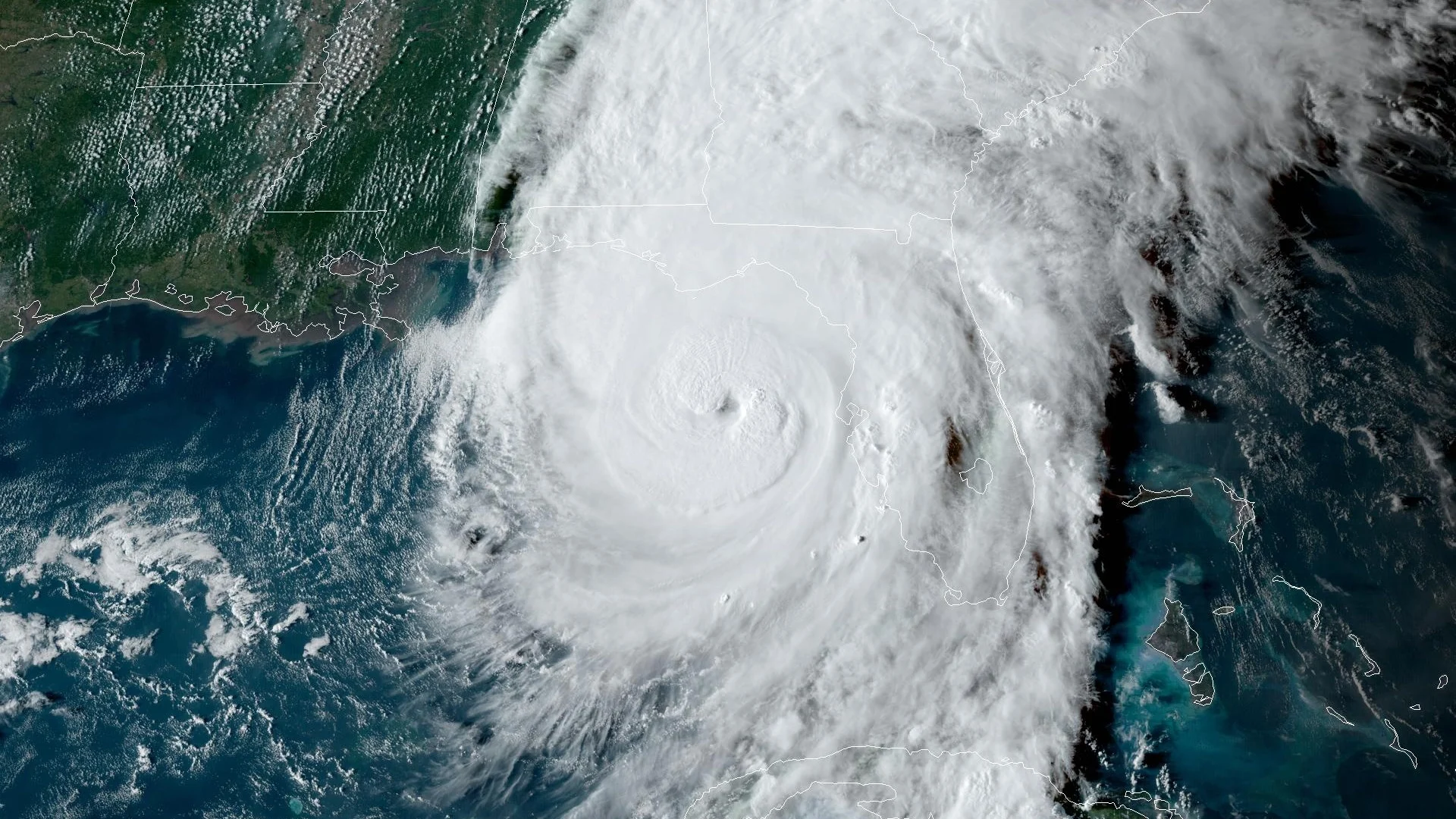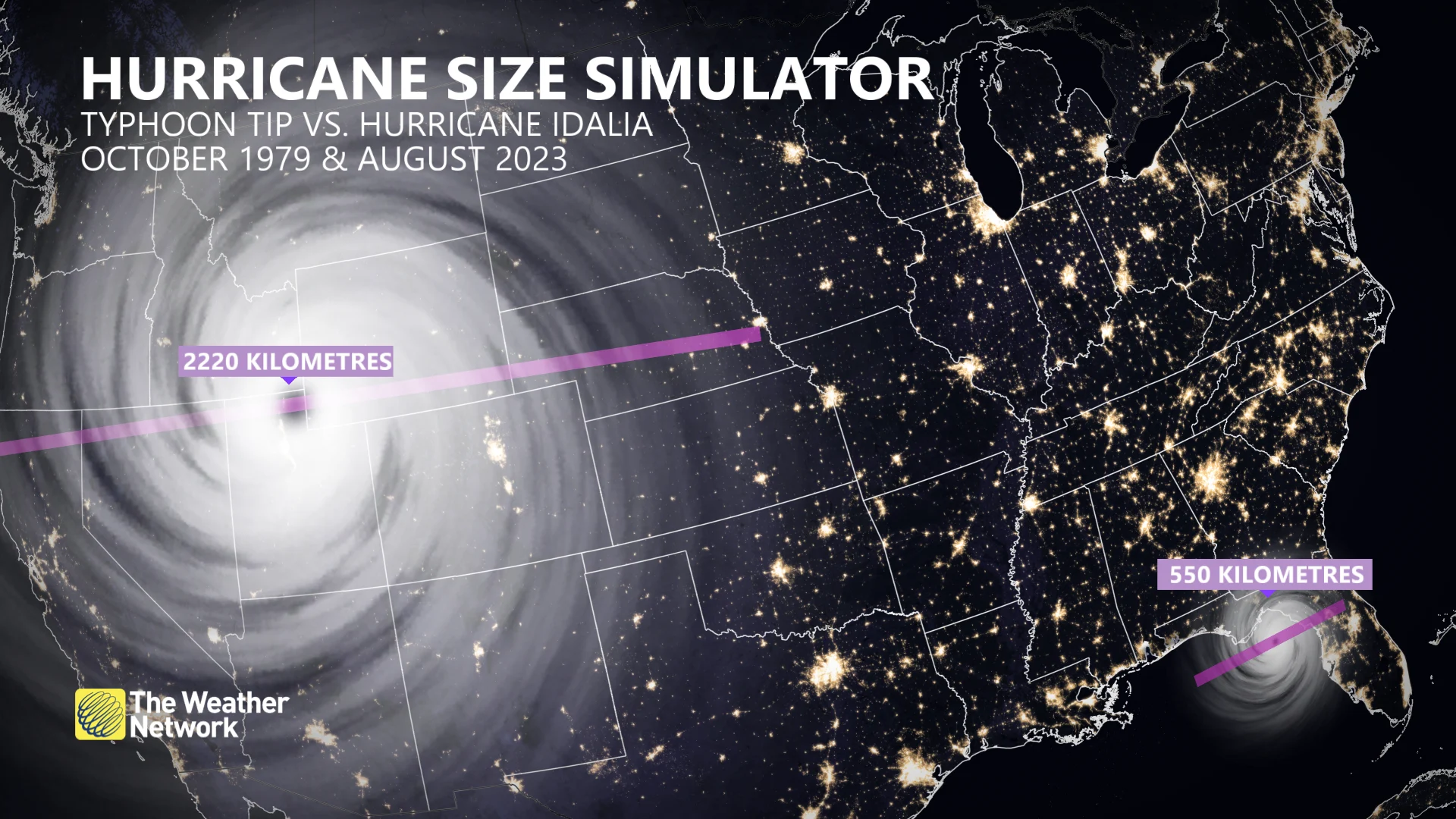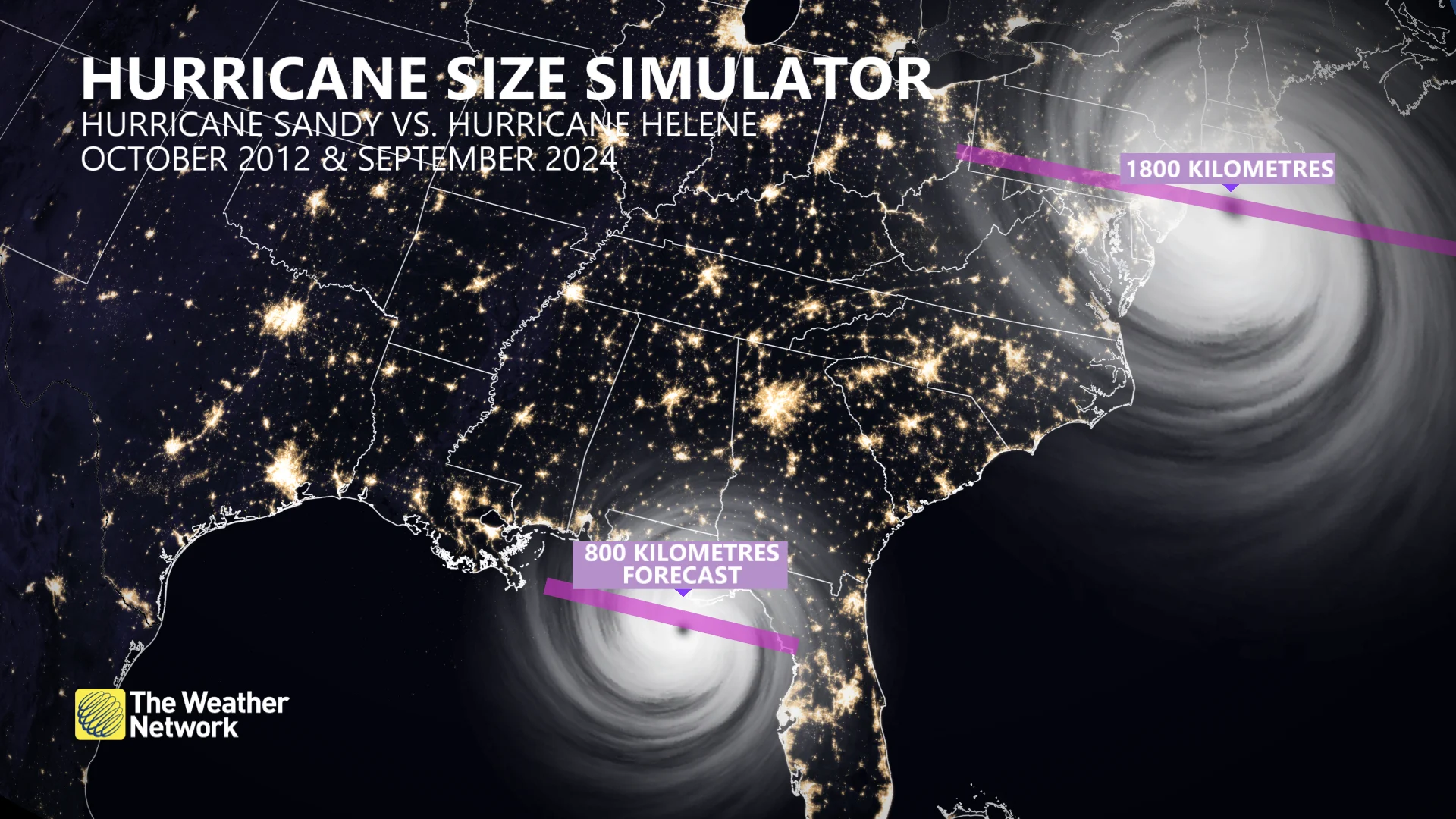
‘Catastrophic’ Hurricane Helene makes landfall in Florida
Destructive winds, flooding rains, and a life-threatening storm surge are ongoing as major Hurricane Helene makes landfall in Florida
Hurricane Helene made landfall near Perry, Florida, at 11:10 p.m. EDT on Thursday as a major Category 4 storm with maximum sustained winds of 225 km/h.
The U.S. National Weather Service (NWS) issued a rare extreme wind warning for portions of the Florida Panhandle where Helene made landfall on Thursday. "Treat these imminent extreme winds as if a tornado was approaching and move immediately to an interior room or shelter NOW!," the agency said.

A catastrophic, life-threatening storm surge is ongoing across the Florida coast as Helene pushes inland. Residents were urged to heed evacuation orders as storm surge flooding could reach as much as 6 metres above ground level in the Big Bend area of Florida’s Panhandle.
More than 900,000 customers were without power across Florida as of 11:00 p.m. local time. Water sensors in Cedar Key, Fla., measured nearly 2.5 metres of storm surge shortly before landfall on Thursday.
DON’T MISS: Closely watching as Helene moves, but here's why Canada will likely be spared
Helene was “at the upper bound of hurricanes in terms of storm size,” the U.S. National Hurricane Center (NHC) reported on Thursday. The hurricane’s wind field measured more than 700 km across from one side to the other as the storm approached landfall.
Widespread hurricane warnings and tropical storm warnings are in effect for hundreds of kilometres inland. Helene’s sheer size and swift forward motion will push damaging winds toward the cities of Atlanta, Georgia; Greenville, S.C.; and Charlotte, N.C., overnight Thursday and into the day Friday.
MUST SEE: The Weather Network's hurricane hub for the latest updates on all tropical activity
Helene strikes Florida at peak intensity
Hurricane Helene took advantage of favourable conditions to strengthen all the way until landfall, striking Florida’s Big Bend region at peak intensity as a Category 4 storm with maximum sustained winds of 225 km/h. This is the strongest hurricane to hit the region since records began in 1851.
According to John Dailey, the mayor of Tallahassee, this could be the strongest storm to ever make a direct hit on the city. Helene could produce "unprecedented damage like nothing we have ever experienced before as a community," Dailey said in a news conference on Wednesday.
RELATED: Hurricane Helene will halt flights causing a domino effect of delays

(The Weather Network's Mark Robinson will be live on location in Florida as Helene makes landfall)
Thousands have already evacuated along Florida's Gulf Coast, including Sarasota and Charlotte counties. Officials warn that this is not a survivable event for those in coastal or low- lying areas. The threat for flooding rains, damaging winds, and potentially life-threatening storm surge are all on the table. Power outages will likely be counted in the millions of customers.
A state of emergency has been declared for 61 of Florida’s 67 counties. The storm will span beyond Florida, as well, as much of the Southeast prepares for Helene's exceptionally large and widespread impacts.
Life-threatening storm surge
Hurricane Helene’s immense size and strength will push a devastating storm surge into the coast. A storm surge is seawater pushed inland by the force of a hurricane’s persistent onshore winds.
"The combination of a dangerous storm surge and the tide will cause normally dry areas near the coast to be flooded by rising waters moving inland from the shoreline," says the NHC.

A damaging storm surge is underway across Tampa Bay, where Pinellas County Emergency Management reported Thursday evening that the flooding began cutting off sewage systems in the region.
Communities near the point of landfall could see storm surge as high as 4-5.5 metres, and some isolated areas could even see storm surge up to 6 m above ground level.

This is an extreme storm surge forecast, and similar to Hurricane Laura's surge in Louisiana in 2020. The largest storm surge recorded in the U.S. occurred during Hurricane Katrina with 8.53 metres (28 feet) across southern Mississippi.
Threat for considerable flash flooding with torrential rains
The storm is expected to produce widespread and potentially catastrophic flash flooding across the southeastern U.S. through Saturday.
Mountainous sections of the western Carolinas and northern Georgia have already seen 200-300 mm of rain over the past couple of days. This doesn’t account for the additional 100-300 mm of rain expected as the core of Hurricane Helene passes over the region.

MUST SEE: Hurricane remnants can bring dangerous weather deep into Canada.
Additional heavy rain on top of what’s already fallen will “likely result in catastrophic and potentially life-threatening flash and urban flooding, along with significant river flooding. Numerous landslides are expected in steep terrain across the southern Appalachians," the NHC warns.
Tennessee's all-time rainfall record from the tropics is in jeopardy, and currently stands at 345 mm with Tropical Storm Chris in 1982.
WATCH: Rains begin in Florida as Hurricane Helene advances in the Gulf
Hurricane Helene is well above average in terms of storm diameter, extending to more than 800 km across. It’ll take up roughly half the size of the Gulf of Mexico, with impacts spreading in some cases to as much as 500 km from the eye.

The largest hurricane diameter in history was Typhoon Tip in 1979, having a span exceeding 2,000 kilometres.
Helene was on track to grow about 60 per cent larger than Hurricane Idalia, which caused $3.6 billion worth of damage. Even though Helene’s diameter is close to 800 kilometres, it’s half of what Hurricane Sandy’s width was in October 2012.

Despite the unexpected lull in activity this hurricane season, remember that we could still see dangerous storms develop over the coming days and weeks. Coastal residents should closely monitor forecasts and have emergency preparedness kits ready to go long before a storm ever threatens land.
WATCH: How two decades of science has shrunk the hurricane cone
With files from Reuters











